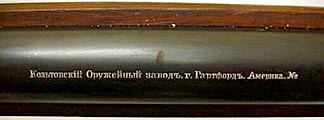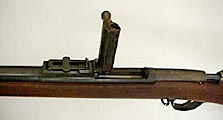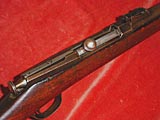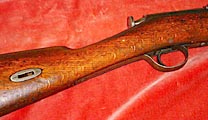
|
|
Russo-Turkish War of Liberation 1877-1878 Chapter Three - Small arms of the warring states - Russia Modern weapons had been constructed during the Civil War in the United States. The magazine rifles Spenser & Henry attracted attention. Russia was closely following the development of the American arms production. Colonel Gorlov and Captain Gunius were sent to the United States to get acquainted with new developments. In 1867 in New York, the two of them tested many new weapons and had finally chosen the model constructed by Hiram Berdan. At the same time, England had shown interest in the same model and had signed a contract for the supply of 50,000 pieces. The model had been accepted for armament in Spain as well, but with a 14,4 mm caliber different from the original 11,43 mm caliber. Gorlov and Gunius sought to improve the system and they had constructed an entirely new system within a short period of time. They decreased the caliber to 10,67 mm, removed the old firing-pin and replaced it with a linear moving one, which was set in motion by a spiral spring. To match the new caliber, they invented a bottle-like bullet. The breech-bolt remained the same to a great extent, opening upwards and onwards following the model of Baranov and Vanzl. Hiram Berdan accepted these modifications and they were introduced to the production. On October 28, 1868, Alexander II recognized the Gorlov-Gunius model under the official name “shooing rifle 1868 model”. It was known as Berdana 1 among Russian soldiers and the arms circles. For a number of reasons, this rifle had not been produced in Russia. As early as 1868, the factories of Samuel Colt in Hartford had taken orders for 30,000 rifles. They have a notice in Russian reading “Colt Arms Factory, Hartfort, US”.1 While Gorlov and Gunius were not credited for what they had done, in the United States the rifle was named in their honor “Russian musket”. During the Russian-Turkish War, some shooting battalions as well as dragoon, hussar and ulhan units were armed with Berdana 1. Though modified, Berdana was destined to remain in the Russian army armament. Hiram Berdan arrived in Petersburg in April 1869 and proposed to the Military Ministry a new system with a cylindrical and gliding breech-bolt after the model of the Prussian system Dreyse, which was the first of this kind. The testing of the system started a month later, demonstrating its advantages over older systems. As to the firing speed, 18 shootings per minute could be produced with Berdana 1, and 28 – with Berdana 2. As a result, it was introduced for the armament of the Russian army under the name “rifle 1870 model” or Berdana 2. The Military Minister Milyutin wrote that “it could be recognized as the most perfect among all quick-firing arms known hitherto”. During the war, the horsemen unit of the Bulgarian Volunteers' Corps was armed with the cavalry carbine Berdana 2.
|
Mannlicher ©2003-2004. All rights reserved. No part of this site can be reproduced in any way without the explicit permission of the authors.







